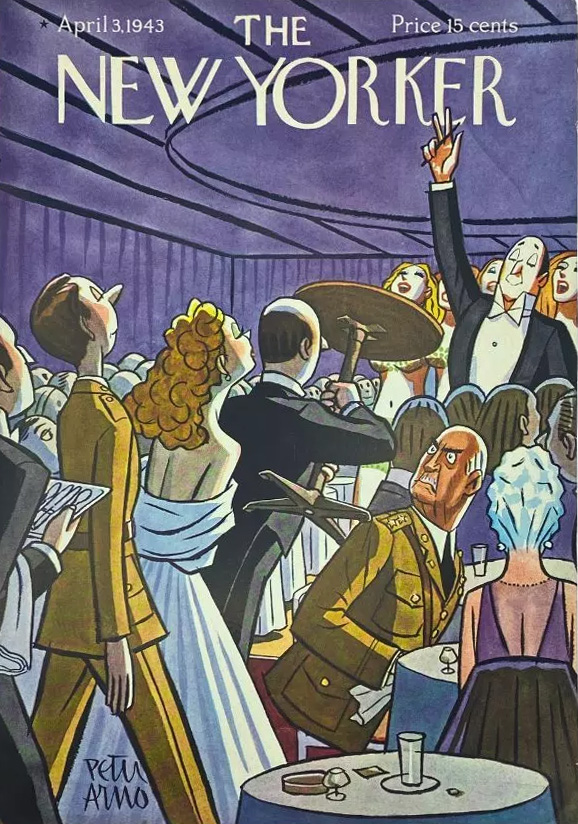Peter Arno (1904 – 1968) was a groundbreaking American cartoonist best known for helping to define the sophisticated wit and style of The New Yorker during its formative decades. Joining the magazine shortly after its launch in 1925, Arno quickly became a fixture, contributing countless covers and over 1,000 cartoons that captured the rhythms, contradictions, and absurdities of modern urban life. His bold lines, elegant compositions, and sharp social commentary helped shape the visual identity of The New Yorker and elevated the single-panel cartoon into an art form. Arno’s characters—from haughty socialites to bemused businessmen—embodied a unique blend of glamour, satire, and New York-specific charm, often skewering the elite with a knowing wink. Beyond his technical prowess, Arno’s influence lies in his ability to blend humor with observation, sophistication with irreverence. He was widely admired by peers and critics alike, and his work paved the way for generations of cartoonists who followed. Often credited as the father of the modern magazine cartoon, Peter Arno’s legacy endures as a cornerstone of American cartooning and mid-century visual culture.
Art credit: Peter Arno, The New Yorker, April 3, 1943. Ink and watercolor on paper.

